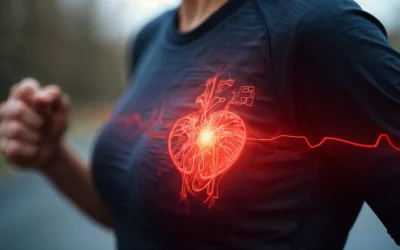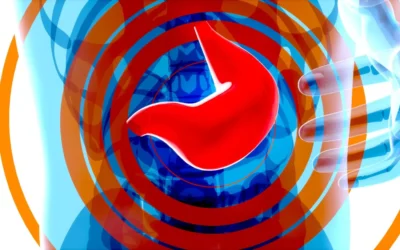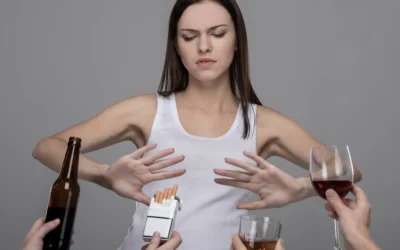In an era where plastic permeates every aspect of our lives, the threat of microplastics looms large. These tiny plastic particles, often invisible to the naked eye, have infiltrated our food, water, and even the air we breathe. As awareness grows about the potential health risks associated with microplastic exposure, many are seeking practical ways to minimize their contact with these ubiquitous pollutants. This article delves into effective strategies for reducing our exposure to microplastics and their associated chemicals, offering actionable advice for a healthier lifestyle.
Table of Contents
The Water We Drink: A Hidden Source of Microplastics
The most immediate action we can take to reduce microplastic exposure is to reconsider our drinking water sources. Plastic bottles, once seen as a convenient and safe option, are now recognized as potential contributors to microplastic ingestion. These containers can leach not only microplastics but also harmful chemicals like Bisphenol A (BPA) and Bisphenol S (BPS) into the water they contain.Even when opting for glass-bottled water, consumers must be vigilant about water quality, particularly in carbonated varieties. The presence of per- and polyfluoroalkyl substances (PFAS), known as “forever chemicals” due to their persistence in the environment and the human body, adds another layer of concern. These substances have been linked to various health issues, including hormonal disruptions and certain cancers.A 2020 Consumer Reports study revealed alarming levels of PFAS in popular sparkling water brands:
- Topo Chico: 9.76 parts per trillion, raising concerns about the brand’s filtration processes and source water quality.
- Perrier: 1.1 parts per trillion, significantly lower than Topo Chico but still detectable.
- San Pellegrino: 0.31 parts per trillion, demonstrating that it’s possible to achieve very low PFAS levels in bottled water.
While some brands, like San Pellegrino, demonstrated lower PFAS levels and offer glass packaging options, the variability in results underscores the importance of consumer awareness and caution. It’s worth noting that in 2023, Coca-Cola, the parent company of Topo Chico, claimed to have reduced their PFAS levels by about half. However, without transparent empirical data, this claim remains unverified, and even if accurate, would still leave their levels higher than many competitors.
Taking Control of Water Quality at Home
Given the uncertainties surrounding bottled water, many experts recommend taking control of water quality at home. One of the most effective methods is installing a reverse osmosis filtration system. These systems can remove up to 99.9% of microplastic particles from water, along with a wide range of other contaminants including heavy metals, bacteria, and chemicals like BPA and PFAS.However, it’s important to note that reverse osmosis filters also strip away beneficial minerals and trace elements essential for bodily functions. To address this, consider:
- Choosing a system with a remineralization filter, which can add back essential minerals like calcium and magnesium after the purification process.
- Using high-quality mineral drops to add back essential elements, allowing you to customize the mineral content of your water.
- Supplementing with mineral supplements as advised by a healthcare professional, especially if you rely heavily on reverse osmosis water for your daily intake.
The versatility of reverse osmosis systems extends beyond drinking water. Using this purified water to wash fruits and vegetables can help remove microplastic particles that may have settled on their surfaces from soil, contaminated water, or air exposure. This additional step can significantly reduce your overall microplastic intake from produce.
Rethinking Food Choices and Storage
Our food choices and storage habits play a crucial role in microplastic exposure. Here are some strategies to minimize risk:
- Opt for fresh produce over packaged foods to reduce contact with plastic wrapping. Fresh fruits and vegetables not only minimize plastic exposure but also offer higher nutritional value.
- Choose glass-packaged products instead of canned foods, which often have plastic linings containing BPA or BPS. Glass packaging is inert and doesn’t leach chemicals into food.
- Use glass, stainless steel, or ceramic containers for food storage instead of plastic. These materials are durable, don’t absorb odors, and are free from harmful chemicals.
- Avoid heating food in plastic containers, as heat accelerates chemical leaching and microplastic shedding. Transfer food to glass or ceramic dishes before microwaving.
- Cook with titanium, ceramic, or cast iron pans instead of non-stick cookware, which may contain harmful chemicals. These alternatives can also enhance the flavor of your food.
It’s crucial to be aware of the “BPA-free” myth. Many products labeled as such contain alternative chemicals like BPS, which may have similar hormonal disrupting effects. Studies suggest that BPS could adversely affect fetal development, brain health, and cardiovascular function. This underscores the importance of reducing overall plastic use rather than simply switching to BPA-free alternatives.
Hidden Sources of Microplastics in Daily Life
Everyday items can be unexpected sources of microplastic exposure. For instance, disposable paper coffee and tea cups are typically lined with plastic to prevent leaks. When hot beverages are poured into these cups, the heat causes the plastic lining to break down, potentially releasing microplastics and chemicals like BPA into the drink at much higher levels than cold liquids.To mitigate this risk:
- Bring your own reusable mug when getting coffee or tea on the go. Many stylish and insulated options are available that keep your drink at the desired temperature for hours.
- Request ceramic cups when enjoying drinks at cafes. This not only reduces plastic exposure but also enhances the overall coffee-drinking experience.
- Consider that some coffee shops offer discounts for customers who bring their own mugs, making this eco-friendly choice financially beneficial as well.
Another hidden source of microplastics is salt. Consuming salt can add an estimated 7,000 microplastic particles to our diet annually. Different types of salt contain varying levels of microplastic contamination:
- Sea salt: 550 to 681 microplastic particles per kilogram, reflecting the high levels of plastic pollution in our oceans.
- Lake salt: Moderate levels of contamination, influenced by the pollution levels in the source lakes.
- Rock salt (e.g., Morton’s iodized salt, pink Himalayan salt): Lowest levels of contamination, as these salts are mined from ancient deposits largely protected from modern pollution.
Opting for rock or mined salts can significantly reduce microplastic intake from this source, while also providing trace minerals that may be beneficial to health.
Clearing the Air: Reducing Airborne Microplastic Exposure
The air we breathe is another significant, often overlooked source of microplastic exposure. To minimize this risk:
- Use HEPA filters in your home, especially in areas with synthetic materials. These filters can capture particles as small as 0.3 microns, effectively removing most airborne microplastics.
- Choose vacuum cleaners equipped with HEPA filters for effective microplastic removal during cleaning. Regular vacuuming with these filters can significantly improve indoor air quality.
- Opt for clothing made from 100% natural fibers like cotton, bamboo, linen, hemp, wool, or silk. These materials not only reduce microplastic shedding but are often more comfortable and breathable.
- Install a microfiber filter on your washing machine to trap microplastics released during laundry. This simple addition can prevent thousands of microfibers from entering waterways with each wash.
- Consider using laundry bags designed to catch microfibers, such as those offered by Guppy Friend. These bags provide a cost-effective solution for those not ready to install a permanent filter.
The Skin Connection: Unexpected Pathways of Exposure
While less significant than ingestion or inhalation, dermal absorption of microplastics and associated chemicals like BPA is still a concern. Thermal paper receipts, commonly used in supermarkets, gas stations, and ATMs, often contain BPA as a color developer. Handling these receipts can lead to BPA transfer through the skin.Interestingly, the use of hand sanitizers, lotions, or sunscreens can dramatically increase BPA absorption through the skin by enhancing skin permeability. To reduce this risk:
- Opt for digital receipts when possible, which not only reduces BPA exposure but also helps reduce paper waste.
- Avoid using hand sanitizer before handling receipts, as this can increase BPA absorption by up to 100 times.
- If your job requires frequent receipt handling, consider wearing nitrile gloves for protection. These gloves provide an effective barrier against BPA and other chemicals.
By implementing these practical strategies, we can significantly reduce our exposure to microplastics and their associated chemicals in our daily lives. While it may not be possible to eliminate all sources of microplastic exposure, these steps can help mitigate the potential health risks and contribute to a healthier lifestyle overall. As research in this field continues to evolve, staying informed and adapting our habits accordingly will be crucial in navigating the challenges posed by microplastic pollution.
References
- Consumer Reports. (2020). “PFAS Levels in Popular Sparkling Water Brands.” Consumer Reports.
- Eerkes-Medrano, D., Leslie, H. A., & Quinn, B. (2019). “Microplastics in drinking water: A review and assessment.” Current Opinion in Environmental Science & Health, 7, 69-75.
- Hernandez, L. M., Xu, E. G., Larsson, H. C., Tahara, R., Maisuria, V. B., & Tufenkji, N. (2019). “Plastic teabags release billions of microparticles and nanoparticles into tea.” Environmental Science & Technology, 53(21), 12300-12310.
- Kim, J. S., Lee, H. J., Kim, S. K., & Kim, H. J. (2018). “Global pattern of microplastics (MPs) in commercial food-grade salts: Sea salt as an indicator of seawater MP pollution.” Environmental Science & Technology, 52(21), 12819-12828.
- Lim, X. (2021). “Microplastics are everywhere — but are they harmful?” Nature, 593(7857), 22-25.
- Prata, J. C., da Costa, J. P., Lopes, I., Duarte, A. C., & Rocha-Santos, T. (2020). “Environmental exposure to microplastics: An overview on possible human health effects.” Science of The Total Environment, 702, 134455.
- Ranjan, V. P., Joseph, A., & Goel, S. (2021). “Microplastics and other harmful substances released from disposable paper cups into hot water.” Journal of Hazardous Materials, 404, 124118.
- Waring, R. H., Harris, R. M., & Mitchell, S. C. (2018). “Plastic contamination of the food chain: A threat to human health?” Maturitas, 115, 64-68.





0 Comments